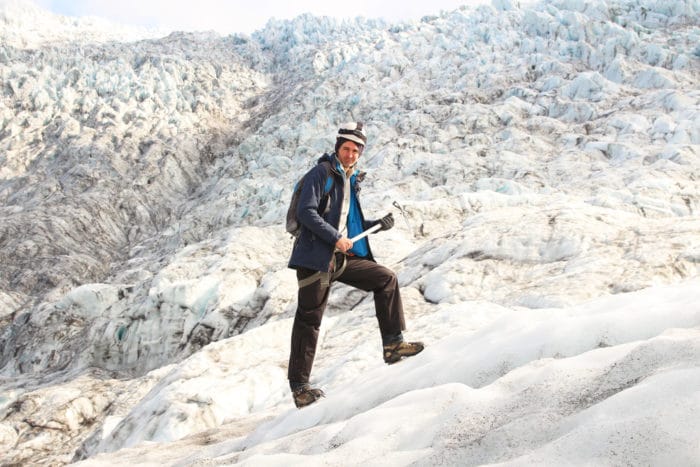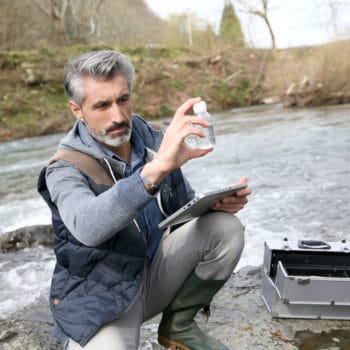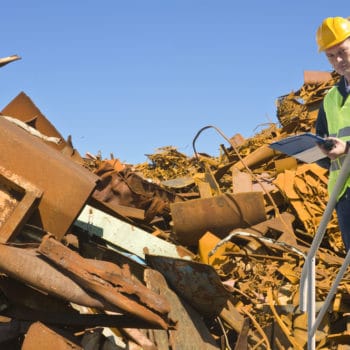Why We Love It
-
$74,920Potential Avg. Salary
-
Get to TravelCareer Attribute
-
Green JobsCareer Attribute
-
Outdoor Work EnvironmentCareer Attribute
Glaciologists have the opportunity to study all aspects of snow and ice, whether it is from mountain glaciers to ice caps. In particular, the focus is on its physical properties and its impact on the surrounding environment.
Recommended Schools
What is a Glaciologist?
Duties
The primary duties of a glaciologist are listed below:
- Conduct research on the formation and movement of glaciers, snow, ice caps, ice sheets and permafrost, by analysing ice samples and monitoring formations.
- Utilize advanced technologies like satellite imaging or airborne remote sensing, to assess patterns in ice movement and climate induced changes in annual growth layers.
- Wear proper protective gear and equipment for field work, which includes eyewear, crash helmets and body harness.
- Write and publish well-researched reports on experimental findings to share with the glaciologists’ community.
- Interact with clients and government authorities over the phone or in meetings, on report findings and implications.
Day in the Life
Glaciologists live an exciting life, spending months at a stretch living on a glacier somewhere in Greenland or in the artic. The main job of a glaciologist is to conduct various tests in a secure manner, to better understand the movements and transformative processes of glaciers and snow. To do this, you will work both in a standard office and also travel for extended periods to remote locations on team expeditions.
This involves installing markers on a glacier to study its width or height, and record its position. Surveying the markers is helpful to determine how they a glacier moves and in which direction. You will also work with your team to collect snow and ice samples from within the crevasse – this part of the glacier points to historic conditions such as previous alterations in climate, the annual rate of snowfall, chemical properties, etc. Other work you may do is write reports to record your results and findings, assess photos from satellites to find evidence for proofs, and present your research by attending professional conferences, meetings and discussions.
Work Schedule
Glaciers need to be studied up close and to do that, glaciologists head to research stations that are set up in remote, cold regions around the world. Most glaciologists balance their time between working at an office and heading to the north for field work. Office work involves regular hours, 9 am – 5pm, where you process collected data and teach students at college and university. If you are working in the field, you will have odd hours and stay on the glacier for long periods with little or occasional physical activity. You must be physically fit and have good stamina to work in exhausting harsh conditions such as extreme cold temperatures, strong winds, etc.
Growth of the Job
Job growth as a glaciologist, among other geographer careers, has been relatively steady since 2004. The average rate at which job opportunities have emerged is at 12.22 percent each year. The demand for such professions is expected to rise with new job openings to be filled over the next few years. Those with cross-functional expertise and field experience can find lucrative jobs. Alternative career paths for glaciologists include working as an environmental geologist or geophysicist, hydrologist, oceanographer, climate change specialist, climatologist and meteorologist.
Typical Employers
Glaciologists, like others working as geophysical scientists, are employed by colleges, research institutes, universities and the government – federal, state and municipal branches. There are also a few individuals who choose to work as consultants and value self-employment – in such cases, they contract their services to different job sectors such as environmental and engineering firms.
Recommended Schools
How To Become a Glaciologist
Glaciologists must have a bachelor of science in geology or glaciology, as a minimum qualification for most positions. To work in more advanced positions like a field researcher or postsecondary instructor, you have to complete a master’s or doctoral degree in glaciology. Volunteering or interning with glaciologists and geographers Is a good way to gain a deeper understanding into the type of day-to-day work in such positions.
Aspiring candidates must be skilled at math and science to calculate complex models and track glacial patterns. Since much of the work is carried out on the field, you should be physically fit and able to adapt to tough natural environments. There are many uncertainties in this line of work such as unreliable weather conditions, failure of equipment, etc. for which you must be calm and tackle problems effectively.
Glaciologist Salary Data
We’ve provided you the following to learn more about this career. The salary and growth data on this page comes from recently published Bureau of Labor Statistics data while the recommendations and editorial content are based on our research.
National Anual Salary
Low Range
$58,570Average
$74,920High Range
$102,930National Hourly Wage
Low Range
$28/hrAverage
$36/hrHigh Range
$49/hrHow do Glaciologist salaries stack up to other jobs across the country? Based on the latest jobs data nationwide, Glaciologist's can make an average annual salary of $74,920, or $36 per hour. On the lower end, they can make $58,570 or $28 per hour, perhaps when just starting out or based on the state you live in.
Salary Rankings And Facts
#170 Nationally for All Careers
Above Average Salary Nationally
Programs and Degrees
Here are the most common degrees for becoming a Glaciologist. a is usually recommended and specifically a degree or coursework that prepares you for the particular field, see below.
Highest Education Among Glaciologists
- 17% Doctorate
- 37% Masters
- 36.8% Bachelors
- 3.9% Associates
- 4.8% College
- 0.3% High School
- 0.2% Less than High School
Job Growth Projections and Forecast
2014 Total Jobs
1,4002024 Est. Jobs
1,400Job Growth Rate
---Est. New Jobs
---How does Glaciologist job growth stack up to other jobs across the country? By 2024, there will be a change of --- jobs for a total of 1,400 people employed in the career nationwide. This is a --- change in growth over the next ten years, giving the career a growth rate nationwide of Above Average.
Growth Rankings And Facts
#594 Nationally for All Careers
Above Avg. Growth Nationally
What Companies Employ The Most Glaciologists
| Industry | Current Jobs | New Jobs Needed | % Increase |
|---|---|---|---|
| Federal government, excluding postal service | 800 | -100 | 0% |
| Engineering services | 100 | 100 | --- |
| Management, scientific, and technical consulting services | 100 | --- | --- |










